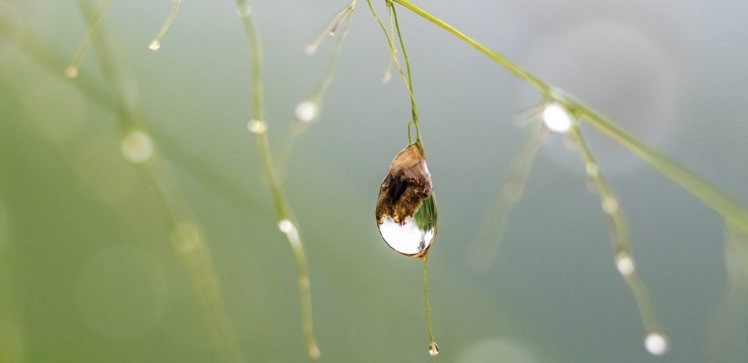Delivering tailored doses of water crops can be made possible with the help of smart electronic soil sensors. These sensors help improve food production while saving water.

Irrigation management in agriculture is one of the most effective tools to protect precious water resources, especially in arid and desert regions of the globe. Image Credit: 2023 KAUST; Morgan Bennett Smith
Scientists from King Abdullah University of Science and Technology (KAUST) have come up with a quick and sensitive soil moisture sensor. A metal-organic framework (MOF) at the center of it exhibits a very high affinity for water.
Effective water usage is one of the main difficulties that farmers experience in the face of climate change.
“Irrigation management can help improve crop quality, decrease agricultural costs and preserve water,” states Mohamed Eddaoudi, who headed the research with Khaled Salama. “Highly sensitive and selective soil-moisture sensors offer the potential to improve the water management process,” added Salama.
MOFs could be ideally suited to soil moisture sensing, recently shown by Eddaoudi and his collaborators. MOFs are highly porous synthetic materials with a cage-like interior that could be customized to host certain small molecules, such as water.
With their modular porous structure and easy functionalization, MOFs are excellent candidates for sensing applications. MOF thin films have already been incorporated into electronic devices, paving the way for their translation to real-world use.
Osama Shekhah, Research Scientist, Eddaoudi’s Team, King Abdullah University of Science and Technology
The MOFs in the study were chosen depending on their water capacity, hydrolytic stability, and water uptake.
“We explored several different MOFs, including the highly porous Cr-soc-MOF-1 developed by our group at KAUST that can capture twice its own weight in water,” stated Ph.D. student Norah Alsadun.
The MOFs were coated by the research group onto a low-cost interdigitated electrode microsensor that could be fabricated by inkjet printing or laser etching. When this sensor is inserted into moist soil, the air in the MOF is shifted by water, thereby changing its electrical capacitance, a process that can be detected and quantified.
Every MOF device was tested in loamy sand and clayey soil types, which could display considerable variations in texture and water-holding capacity.
Notably, the Cr-soc-MOF-1-coated soil-moisture sensor showed the highest sensitivity, of about 450 percent in clayey soil, with a response time of around 500 seconds.
Khaled Salama, Advanced Membranes and Porous Materials Center, Computer, Electrical and Mathematical Science and Engineering Division, King Abdullah University of Science and Technology
The response of the sensor was extremely selective for water even when several metal ions were present in the soil.
Eddaoudi stated, “We are now designing and developing a portable prototype MOF-based soil moisture sensor that can be easily used for control experiments in real-world, in-field measurements.”
We anticipate that MOF-based soil-moisture sensors will advance the next-generation soil-moisture sensor technology, offering automated and precise irrigation systems.
Khaled Salama, Advanced Membranes and Porous Materials Center, Computer, Electrical and Mathematical Science and Engineering Division, King Abdullah University of Science and Technology
Journal Reference
Alsadun, N., et al. (2023) Institution of Metal–Organic Frameworks as a Highly Sensitive and Selective Layer In-Field Integrated Soil-Moisture Capacitive Sensor. ACS Applied Materials & Interfaces. doi.org/10.1021/acsami.2c20141.